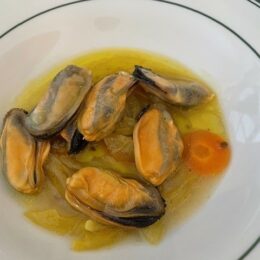France / Paris
on 11 April 2024 at 5:21 am ×
Substance – Introduction Substance is a very good café and place to enjoy a serious coffee in Paris. Their coffee beans are sourced from a number of countries including Costa Rica, Colombia, Panama and Ethiopia (that we have seen on the menu). They also always seem to have the Geisha […]
France / Paris
on 11 April 2024 at 3:07 am ×
Le Doyenné – Introduction It is difficult to describe the delight we felt when we arrived at Le Doyenné restaurant for the first time. It was after the Covid lockdown was over, so there had been a long stretch since we had visited France. During that time we had followed […]
Coffee
on 25 March 2024 at 5:54 am ×
Tortoise Espresso – Introduction During a brief trip to the Victorian area around Castlemaine, Daylesford and Hepburn Springs, one of the biggest surprises was a tiny coffee “hole-in-the-wall” in Castlemaine where the selection of single origin coffee options was as good as anything we have seen in Sydney, Melbourne or […]
Victoria
on 5 March 2024 at 4:12 am ×
Eating country Victoria north of Melbourne – Summary This story is a summary of the places that we have visited recently in country Victoria immediately north of Melbourne. Each of these places can be visited for lunch enabling you to return to Melbourne, or there are many very nice places […]
Provence / France
on 9 February 2024 at 6:46 am ×
Prior to Le Saint Hubert We are not certain about when we will get a chance to drive around France again, but there are some things we do know will be on our list when we do. So, this story is about the events we are looking forward to and […]
Breakfast / Coffee / Lunch / Sydney
on 30 January 2024 at 3:46 am ×
PIÑA Potts Point – Introduction PIÑA Potts Point is a real machine! The queue on a Saturday morning when we arrived in the pouring rain was extensive with everyone waiting patiently for their turn. The coffee beans are sourced from Mecca (we enjoyed both the espresso and the filter), the […]
Sydney
on 21 January 2024 at 7:27 am ×
Paski Vineria Popolare – Introduction Anything associated with Australia’s most energetic wine importer is bound to be exciting and this place is no exception. Our friend, Giorgio de Maria is the owner of the eponymous canine, Paski and fills in his spare time racing around Europe expanding his wine importing […]
Sydney
on 21 January 2024 at 6:30 am ×
Ante – Introduction Of all the restaurants listed on this site in Sydney, this is one of the newer establishments and one we have been hanging out to visit ever since it opened. Run by Matt Young and Jemma Whiteman, this gem of a place gets everything right. The food […]
Japan
on 14 January 2024 at 1:51 am ×
Ahiru Store – Introduction Whenever we land in Tokyo one of our first destinations is the Shibuya district and the tiny wine bar called Ahiru Store. We try to get there early because it is one of the most popular natural wine bars in this busy city. In fact, Ahiru […]
Melbourne / Australia
on 6 January 2024 at 2:38 am ×
Brico – Introduction Brico in Melbourne is the new kid on the block, run by a team that is anything but new. Each of the main players here have deep experience in the restaurant game both in Australia and overseas. We were lucky enough to score a seat the first […]



































